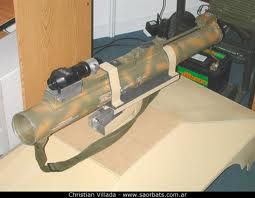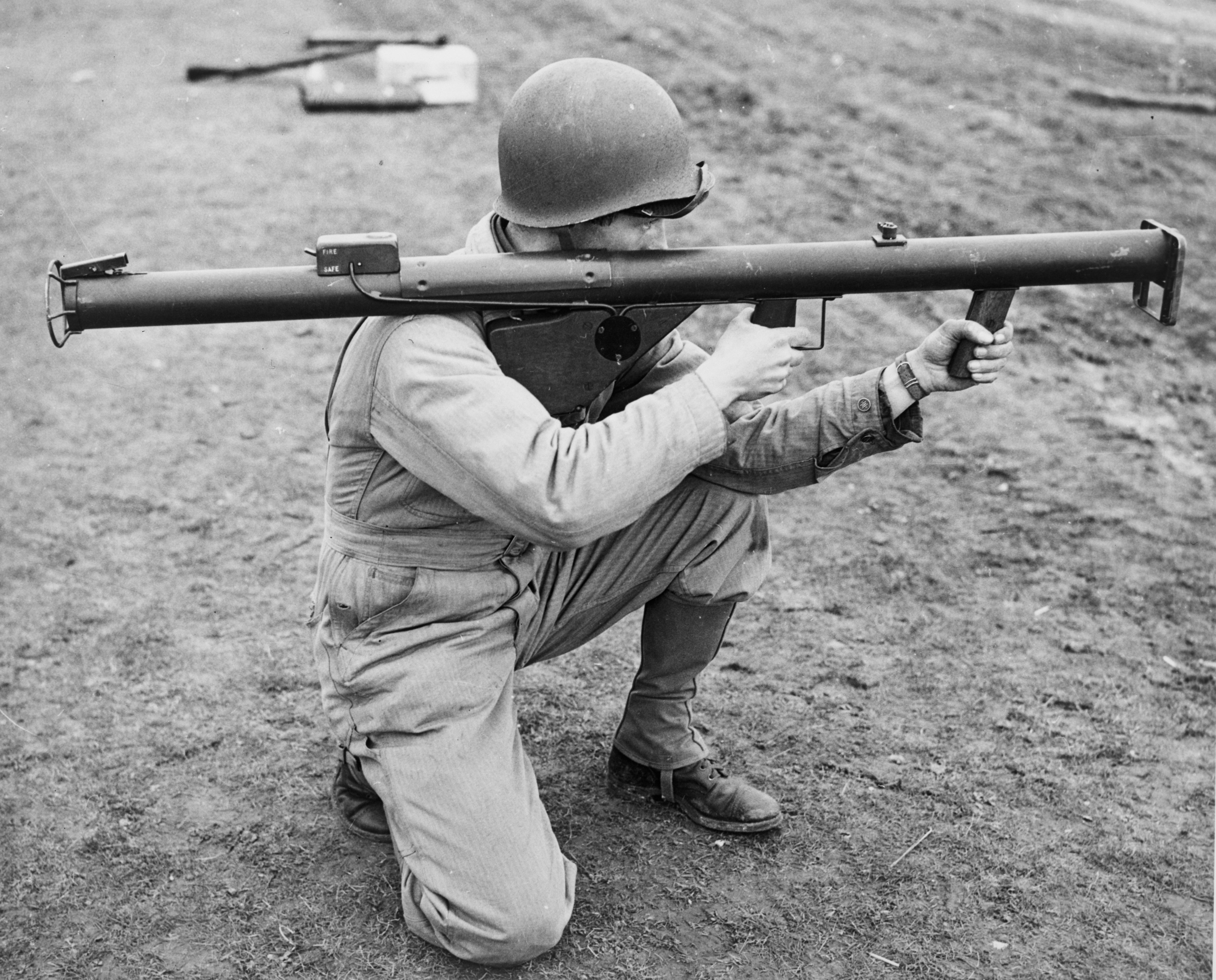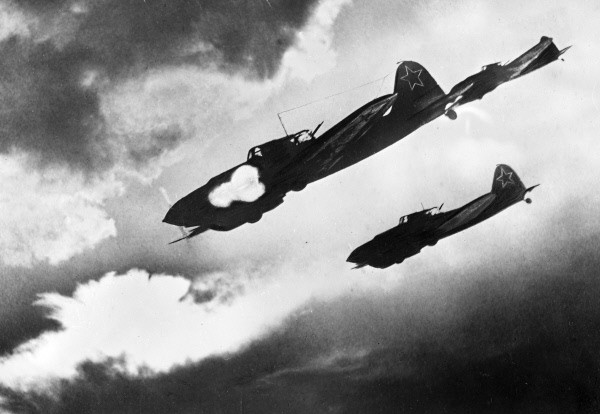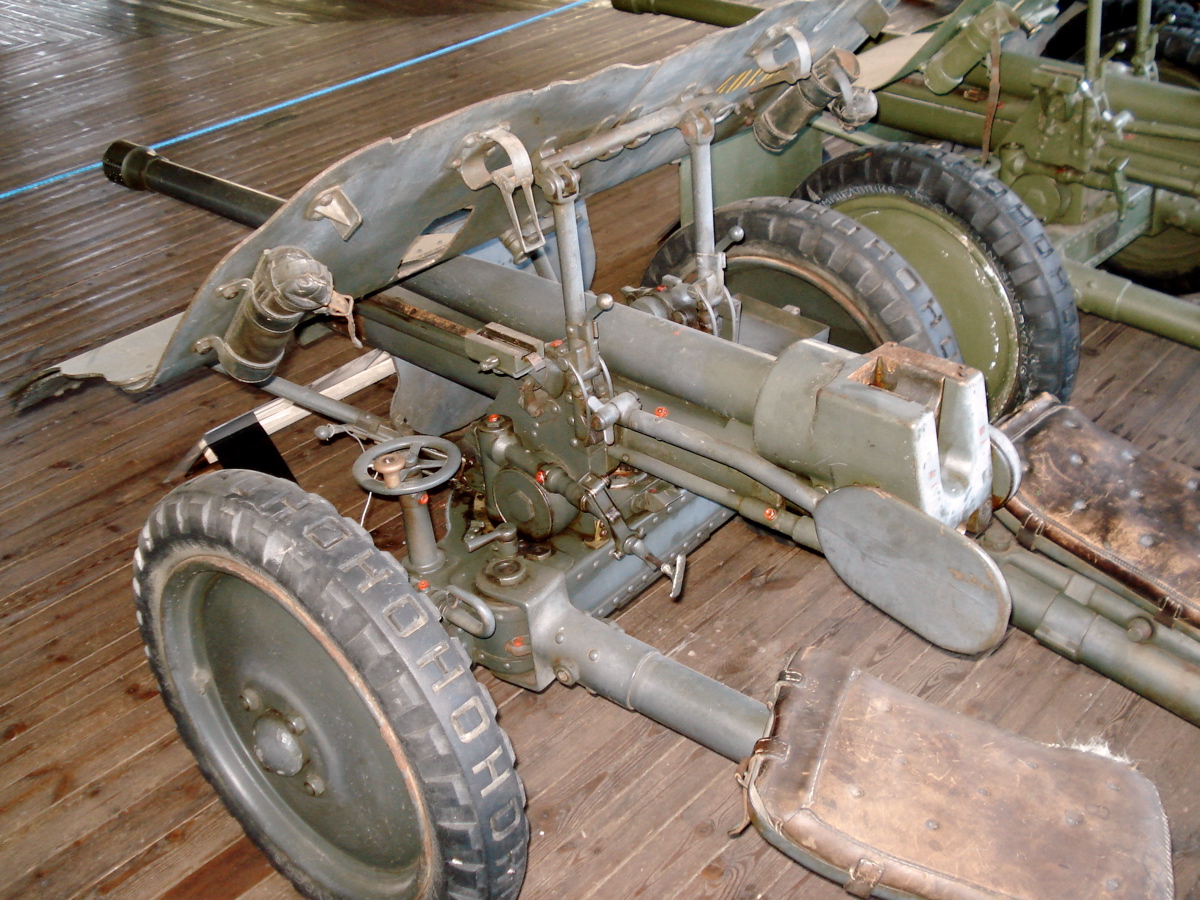|
MARA (anti-tank Weapon)
The MARA is a portable one-shot 78 mm unguided anti-tank weapon, designed and manufactured in Argentina by Fabricaciones Militares (DGFM). The solid rocket propulsion unit was developed by CITEFA. History In the 1990s, the Argentine Army identified the need to replace obsolete short-range infantry antitank weapons in use, Such as the PDEF-40 rifle grenade, with a modern weapon similar to the AT4 locally developed and built, The MARA Project was started by DGFM in the late 1990s, and in February 2005 the weapon was tested at the “Fábrica Militar Fray Luis Beltrán”. Description The MARA is a weapon of 78 mm caliber with a fiberglass launcher tube 70 cm in length when transported that is extended to 1 meter when ready to fire. The launcher weighs about 4.2 kg, can be reused up to five times when using training ammunition, and is disposable when firing live ammunition. The anti-tank projectile is fin-stabilized, and is propelled by the rocker mot ... [...More Info...] [...Related Items...] OR: [Wikipedia] [Google] [Baidu] |
CITEFA Mara
The Institute of Scientific and Technical Research for the Defense (, also known for its acronym CITEDEF), is an Argentine federal agency in charge of research and development in various scientific fields. It is also in charge of homologation of weaponry. Located in the Villa Martelli district of Greater Buenos Aires, CITEDEF is one of the scientific and technological organisms that depend on the Ministry of Defense and its Secretary of Planning. It is also a part of the "Constituyentes Technological Hub" along with other institutions such as the Atomic Energy National Commission ( CNEA), the University of San Martín ( UNSAM) and the National Institute of Industrial Technology (INTI), among others. CITEDEF currently develops a series of projects that give it an edge on research and technology at a regional level. It is the first link of the productive chain within the Production Industry for Defense through the implementation of scientific research and technological development ... [...More Info...] [...Related Items...] OR: [Wikipedia] [Google] [Baidu] |
Anti-tank
Anti-tank warfare refers to the military strategies, tactics, and weapon systems designed to counter and destroy enemy armored vehicles, particularly tanks. It originated during World War I following the first deployment of tanks in 1916, and has since become a fundamental component of land warfare doctrine. Over time, anti-tank warfare has evolved to include a wide range of systems, from handheld infantry weapons and anti-tank guns to guided missiles and air-delivered munitions. Anti-tank warfare evolved rapidly during World War II, leading to infantry-portable weapons. Through the Cold War of 1947–1991, the United States, anti-tank weapons have also been upgraded in number and performance. Since the end of the Cold War in 1992, new threats to tanks and other armored vehicles have included remotely detonated improvised explosive devices (IEDs). During the Russian invasion of Ukraine, drones and loitering munitions have attacked and destroyed tanks. Tank threat ... [...More Info...] [...Related Items...] OR: [Wikipedia] [Google] [Baidu] |
Rocket Launcher
A rocket launcher is a weapon that launches an unguided, rocket-propelled projectile. History The earliest rocket launchers documented in imperial China consisted of arrows modified by the attachment of a rocket motor to the shaft a few inches behind the arrowhead. The rocket was propelled by the burning of the black powder in the motor; these should not be confused with early fire arrows, which were conventional arrows carrying small tubes of black powder as an incendiary that ignited only after the arrow hit its target. The rocket launchers were constructed of wood, basketry, and bamboo tubes. The launchers divided the rockets with frames meant to keep them separated, and the launchers were capable of firing multiple rockets at once. Textual evidence and illustrations of various early rocket launchers are found in the 1510 edition of the '' Wujing Zongyao'' translated by Needham and others at Princeton University. (The original ''Wujing Zongyao'' was compiled between 10 ... [...More Info...] [...Related Items...] OR: [Wikipedia] [Google] [Baidu] |
Anti-tank
Anti-tank warfare refers to the military strategies, tactics, and weapon systems designed to counter and destroy enemy armored vehicles, particularly tanks. It originated during World War I following the first deployment of tanks in 1916, and has since become a fundamental component of land warfare doctrine. Over time, anti-tank warfare has evolved to include a wide range of systems, from handheld infantry weapons and anti-tank guns to guided missiles and air-delivered munitions. Anti-tank warfare evolved rapidly during World War II, leading to infantry-portable weapons. Through the Cold War of 1947–1991, the United States, anti-tank weapons have also been upgraded in number and performance. Since the end of the Cold War in 1992, new threats to tanks and other armored vehicles have included remotely detonated improvised explosive devices (IEDs). During the Russian invasion of Ukraine, drones and loitering munitions have attacked and destroyed tanks. Tank threat ... [...More Info...] [...Related Items...] OR: [Wikipedia] [Google] [Baidu] |
Weapon
A weapon, arm, or armament is any implement or device that is used to deter, threaten, inflict physical damage, harm, or kill. Weapons are used to increase the efficacy and efficiency of activities such as hunting, crime (e.g., murder), law enforcement, self-defense, warfare, or suicide. In a broader context, weapons may be construed to include anything used to gain a tactical, strategic, material, or mental advantage over an adversary or enemy target. While ordinary objects such as rocks and bottles can be used as weapons, many objects are expressly designed for the purpose; these range from simple implements such as clubs and swords to complicated modern firearms, tanks, missiles and biological weapons. Something that has been repurposed, converted, or enhanced to become a weapon of war is termed ''weaponized'', such as a weaponized virus or weaponized laser. History The use of weapons has been a major driver of cultural evolution and human history up to ... [...More Info...] [...Related Items...] OR: [Wikipedia] [Google] [Baidu] |
Fabricaciones Militares
Fabricaciones Militares Sociedad del Estado (Spanish for Military Industries State Corporation) is a state-owned Argentine arms manufacturer based in Buenos Aires. The company was a government agency under the name Dirección General de Fabricaciones Militares ("Directorate General of Military Industries"). Founded in 1941, over the years the company has diversified into different areas such as mining, petroleum, rolling stock and petrochemicals. The company is under the direction of the Argentine Ministry of Defence. History The company was created in 1941, under Argentine law 12.709, in order to expand the Argentine defense industry to compensate for the shortfall of imports that came about during the Second World War. In its early years, it produced primarily small arms and munitions whilst aiding in the development of other key industries in the country. The company expanded quickly and would eventually have 14 factories around the country. However, starting in the 1980s, man ... [...More Info...] [...Related Items...] OR: [Wikipedia] [Google] [Baidu] |
Solid Rocket
A solid-propellant rocket or solid rocket is a rocket with a rocket engine that uses solid propellants (fuel/ oxidizer). The earliest rockets were solid-fuel rockets powered by gunpowder. The inception of gunpowder rockets in warfare can be credited to the ancient Chinese, and in the 13th century, the Mongols played a pivotal role in facilitating their westward adoption. All rockets used some form of solid or powdered propellant until the 20th century, when liquid-propellant rockets offered more efficient and controllable alternatives. Because of their simplicity and reliability, solid rockets are still used today in military armaments worldwide, model rockets, solid rocket boosters and on larger applications. Since solid-fuel rockets can remain in storage for an extended period without much propellant degradation, and since they almost always launch reliably, they have been frequently used in military applications such as missiles. The lower performance of solid propellants ... [...More Info...] [...Related Items...] OR: [Wikipedia] [Google] [Baidu] |
CITEFA
The Institute of Scientific and Technical Research for the Defense (, also known for its acronym CITEDEF), is an Argentine federal agency in charge of research and development in various scientific fields. It is also in charge of homologation of weaponry. Located in the Villa Martelli district of Greater Buenos Aires, CITEDEF is one of the scientific and technological organisms that depend on the Ministry of Defense and its Secretary of Planning. It is also a part of the "Constituyentes Technological Hub" along with other institutions such as the Atomic Energy National Commission ( CNEA), the University of San Martín ( UNSAM) and the National Institute of Industrial Technology (INTI), among others. CITEDEF currently develops a series of projects that give it an edge on research and technology at a regional level. It is the first link of the productive chain within the Production Industry for Defense through the implementation of scientific research and technological developmen ... [...More Info...] [...Related Items...] OR: [Wikipedia] [Google] [Baidu] |
Argentine Army
The Argentine Army () is the Army, land force branch of the Armed Forces of the Argentine Republic and the senior military service of Argentina. Under the Argentine Constitution, the president of Argentina is the commander-in-chief of the Armed Forces. Command authority is exercised through the Ministry of Defense (Argentina), Minister of Defense. The Army's official foundation date is May 29, 1810 (celebrated in Argentina as the ''Army Day''), four days after the May Revolution, Spanish colonial administration in Buenos Aires was overthrown. The new national army was formed out of several pre-existing colonial militia units and locally manned regiments; most notably the Regiment of Patricians, Infantry Regiment "Patricios", which to this date is still an active unit. History Several armed expeditions were sent to the Upper Peru (now Bolivia), Paraguay, Uruguay and Chile to fight Spanish forces and secure Argentina's newly gained Argentine Declaration of Independence, independe ... [...More Info...] [...Related Items...] OR: [Wikipedia] [Google] [Baidu] |
RPG-18
The RPG-18 Mukha () is a Soviet short-range, disposable light anti-tank Shoulder-launched missile weapon, rocket launcher designed in 1972, based on the American M72 LAW. The RPG-18 has been in service in over 20 conflicts and used by over 20 armed forces across the world. History The RPG-18 is very similar to the US M72 LAW, M72-series LAW anti-tank rocket launcher, with captured examples during the Vietnam War likely being sent to the Soviet Union. The RPG-18 has been succeeded by the RPG-22, a very similar design with a larger warhead. Description The RPG-18 fires a 64 mm ''PG-18'' high-explosive anti-tank (HEAT) warhead mounted on a small rocket able to engage targets within 200 meters. The warhead self-destructs six seconds after launch, placing a limit on range even if a sight was used that was effective with targets beyond 200 meters. The RPG-18 can penetrate up to 300 mm of conventional vehicle armor (Rolled homogeneous armour, RHA); up to 500 mm of reinforced c ... [...More Info...] [...Related Items...] OR: [Wikipedia] [Google] [Baidu] |
Anti-tank Rockets
Anti-tank warfare refers to the military strategies, tactics, and weapon systems designed to counter and destroy enemy armored vehicles, particularly tanks. It originated during World War I following the first deployment of tanks in 1916, and has since become a fundamental component of land warfare doctrine. Over time, anti-tank warfare has evolved to include a wide range of systems, from handheld infantry weapons and anti-tank guns to guided missiles and air-delivered munitions. Anti-tank warfare evolved rapidly during World War II, leading to infantry-portable weapons. Through the Cold War of 1947–1991, the United States, anti-tank weapons have also been upgraded in number and performance. Since the end of the Cold War in 1992, new threats to tanks and other armored vehicles have included remotely detonated improvised explosive devices (IEDs). During the Russian invasion of Ukraine, drones and loitering munitions have attacked and destroyed tanks. Tank threat Ant ... [...More Info...] [...Related Items...] OR: [Wikipedia] [Google] [Baidu] |







